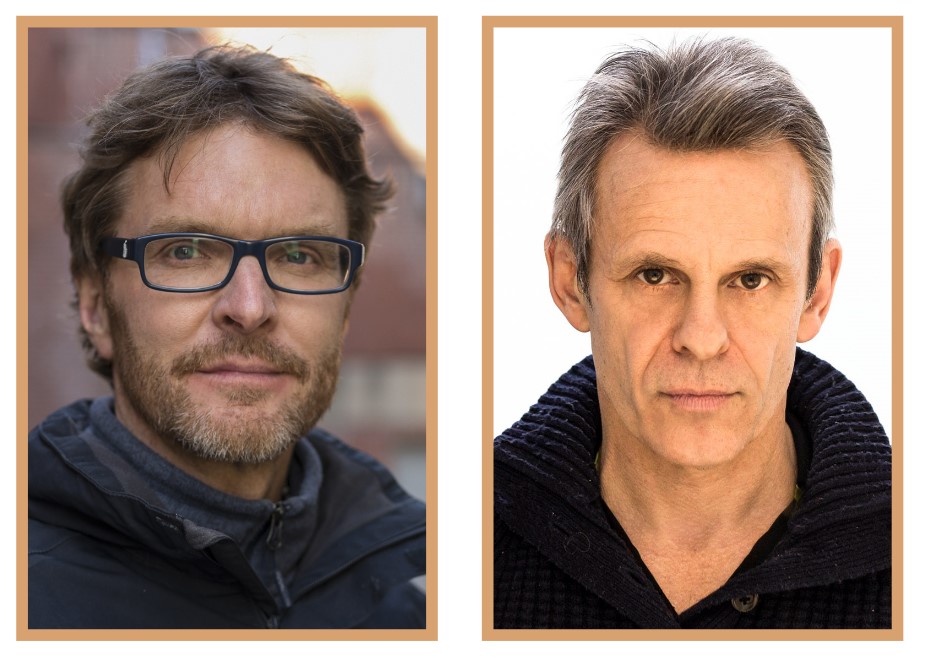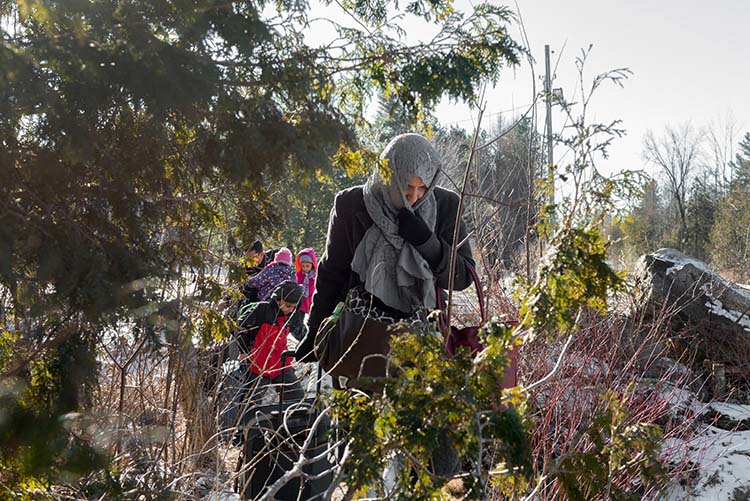
Interview with photographer Darren Ell. Darren’s work, along with the work of fellow photographer Roger LeMoyne, is the basis of Crossing Lines: A New Age of Immigration, a beautiful and haunting exhibition currently on display at the Museum until March 24, 2024.
Content warning: The following article describes a moment of physical violence.
Why are you drawn to the stories of migrants in border regions?
There are many things one can do with photography. Shooting sports or marine photography. There's a million ways to use it. I think it comes from personal convictions and curiosity about the world. And I think it comes from a desire to do something useful with my abilities.
Do you get to know some of the people you're photographing and is there anybody that sticks out in your memory?
On the Mexico-American border, I went across into Matamoros, at the very bottom of Texas. And I met several families there and got to know them and their stories. And gosh, you know, a dad was speaking out a little too much, and he got murdered right in front of his daughter- point blank in the head… And they said, “We have to get out of here. I have a young child.” And that story repeats itself in different parts of the world- people that are fleeing for their lives.
Have you found that there are similarities between migrants in different border regions, regardless of wherever they are?
They're always running from something. Most countries are very afraid that if they open their borders, there'll be a flood of people. But I don't know how true that is, because people don't want to leave their homeland. You have to be very desperate to do that. They're all doing it logically. It's very rational.
You meet people who are teachers, lawyers, people who are in their country doing what we're doing in our country. But things have deteriorated, or they have been threatened because of certain things going on in the society. They have understood that the only way to be safe is to leave the country.
One of the things that happens when you go to these places is it challenges what you may think about a certain place. For example, if we think of Syria, the average reader of a newspaper or someone who watches the news may just think it's overrun by extremists. We don't really understand what it's like in [Damascus] or in Homs. The people I met were teachers, doctors, professionals. They said, “I had a great life before all this descended into chaos.” I think it creates empathy. “Hey, I can relate to that guy. I'm a professional myself. I can relate to what that must be like.”

Have you ever been at risk while you've been out shooting photographs?
In Haiti, in downtown Port of Prince. There was a demonstration, and it got hot between demonstrators and the Haitian police. And they were firing tear gas and so forth. And my fixer* and other journalists from Haiti grabbed me and just literally forced me out of there. He said, “These guys are brutal, so do not get in their way.”
I haven't done combat photography. I haven't been in a full-on war zone, so I don't know what that is like.
How is your work different from Roger's?
Roger is really, really good at catching something, filling a frame with multiple levels of activity. There's a lot of complexity to his photojournalistic images. He's got a beautiful sense of framing. And he's very careful, I think, in his editing and his shooting to get something that keeps you busy when you're looking at it.
My work can sometimes be more static. I'll take two hours in a dump site with life jackets and come out with a pretty interesting series of images. There's nobody there, there's no action. I might work a little in a little slower manner. So maybe that is one element.
An in-person discussion with Darren Ell and Roger LeMoyne will be held at the Museum on February 7, 2024. Register for the event here to save your seat.